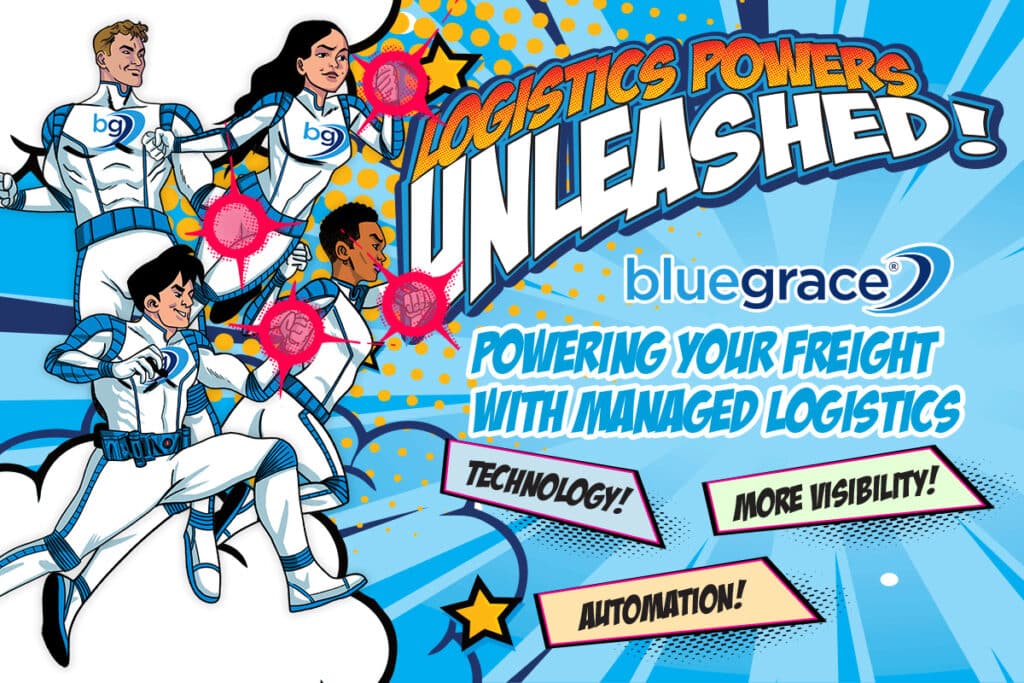
The freight industry is in the middle of a revolution. We are seeing changes take place at an unprecedented speed, and showing no signs of slowing any time soon. To track these changes and how the industry is responding to them, Forbes Insights conducted a survey of 433 senior executives in the Supply Chain, Transportation and Logistics industries. Of those polled, 65 percent of the respondents acknowledge that there is a monumental shift in operations of the corresponding industries as a whole. Of those responses, a similar number, 62 percent, responded that they are experiencing those changes within their own companies.
“We’re at a point where there’s more change taking place in this instant than what I’ve seen in 25 years on the front lines,” says the president and CEO of a major transportation and logistics provider.
These changes are coming from the massive influx of new data that is being collected and collated between the industries, extracted via telematics and the Internet of Things (IoT). Conversely, the data is being driven by massive upgrades in computing power and data storage, as well as being enhanced by Artificial Intelligence and Machine Learning, which removes the tedious and often time-consuming process of human data processing. Transportation is also seeing some considerable advancements in technology, specifically in drones, driver safety technology, driverless vehicles, and blockchain data storage.
Supply Chains that are enhanced by these technologies will be the front-runners in the global market, having a competitive advantage compared to other companies.
Supply Chains that are enhanced by these technologies will be the front-runners in the global market, having a competitive advantage compared to other companies. 58 percent of the consumer base (retailers, manufacturers, etc.) recognize the importance of supply chain, transportation, and logistics for the success of their business. “Anyone whose success depends on their ability to fulfill orders of physical goods for customers is now caught up in this whirlwind of change,” says Mary Long, managing director of the Supply Chain Management Institute at the University of San Diego School of Business.
The Driving Forces
As we mentioned above, these changes are coming faster than we’ve ever seen before. We can attribute this to four driving forces behind the changes.
1. Technological Advancements
Half of the respondents say that advancing technology has a strong impact on their company’s logistics, supply chain, and transportation operations. The heavy hitters for technology are IoT/telematics, AI, Machine Learning, Blockchain, Driver technologies, and Automated Delivery Machines. According to Langley, though the transport industry has always been data-focused, today “We see all of this added computing power—IoT/telematic data collection, data mining, AI and ML—that can be focused on making better decisions, not only from an overall strategic and resource planning basis but in real-time decisions: which routes, which carriers?” says C. John Langley, a clinical professor of supply chain management as well as the director of development for the Center for Supply Chain Research at Penn State’s Smeal College of Business.
Automated delivery technology such as drones and driverless trucks are still in development before we’ll see a full release, but that implementation is certainly on the horizon. In the meantime, we’re seeing advances in driver safety technology such as lane control and safety-braking. As these technologies continue to develop we’ll see a continued evolution of the freight industries.
2. The U.S. Economy is on the Rise
According to half of the survey respondents, there is a growth in the U.S. economy which is having a strong impact on their businesses. While this might fall under the purview of disruptive, the addition of trade tariffs from the Trump administration is changing demand and long-standing transportation patterns. 44 percent of the respondents say that lower U.S. taxes and other such reforms are helping to drive demand upwards.
“This resonates with the CEO of a major trucking carrier, who says, ‘We see it daily, the economy is rolling.’ But this is both a blessing and a curse. Indeed, ‘there’s heightened demand for our services.’ At the same time, however, ‘capacity is extremely tight, so the industry doesn’t always have the trucks it needs right where and when they’re needed.’ Piling on, the industry for some time now has been experiencing a driver shortage—an issue that’s only exacerbated by a strong U.S. economy. Overall, says the CEO, “there’s more freight and more trucks than there are drivers to drive them” says the report.
Nearly half of respondents, 48%, say they are experiencing the need to reevaluate warehouse locations due to shifting trade patterns resulting from changes in the U.S. economy: taxes, tariffs and, to some degree, the return of manufacturing.
Nearly half of respondents, 48%, say they are experiencing the need to reevaluate warehouse locations due to shifting trade patterns resulting from changes in the U.S. economy: taxes, tariffs and, to some degree, the return of manufacturing. All “impact the location of hubs and warehouses,” says Langley.
3. The Amazon Effect and Changing Consumer Expectations
Changing consumer expectations are having a considerable effect on the industry, heavily impacting logistics, transportation, and the supply chain. Consumers now have the expectation of finding whatever they want, whenever they want it and having the order arrive within the next two days. Even the two-day window is beginning to shrink as Amazon rolls out with next day and same day deliveries. “The effect of Amazon is heightened expectations,” says Langley. “Next week is no longer good enough. It’s got to be on its way now and arrive at the destination within a day or two!” It’s not just consumer expectations that have changed because of the Amazon effect. Truckloads also experience a considerable delay because they require more touches before their final delivery.
“Loads used to see two, three, maybe four touches before the goods were in the hands of the end consumer,” explains an earlier-mentioned CEO. But today, getting goods to consumers faster means “seven, eight or nine touches [moving] the freight to a network of warehouses and forward positions.” In short, says the executive, “that final mile is being redefined almost every day.” Interestingly, this is spurring a veritable arms race between e-retailers like Amazon, and brick and mortar retailers by rewarding innovation and pushing advance in customer service and fulfillment.
4. Tighter Regulations
The final driving force for change is the higher level of regulation and control from the U.S. government. Approximately 46 percent of the respondents say that regulations continue to push changes in transportation. The Electronic Logging Device (ELD) mandate is just one example of those regulations. By forcing drivers away from paper logs, there is a tighter restriction on the amount of hours a driver can be on the road. With the ELD, drivers cannot be on the road for more than 11 hours in a 14 hour period, even if it’s not a logical stopping point. It doesn’t always make sense to stop right at 11 hours,” explains an executive interviewed for the report (but preferring anonymity). “What if the driver is on a bridge or stuck in traffic or is only a few minutes away from a proper rest stop?”
That lack of flexibility is increasing the delivery cost.
The paper logs provided drivers a larger degree of flexibility, allowing them to decide when to stop and when to operate. The ELD’s are decidedly rigid, and the clock starts rolling once the truck moves, even if it’s just to move the rig across the parking lot. That lack of flexibility is increasing the delivery cost. “For example, as reported in the Chicago Tribune: For Pete’s Fresh Market, a 12-store grocery chain in the Chicago area, truckloads of produce from Mexico have roughly doubled in cost since the new [ELD] devices were mandated—from about $2,400 for 40,000 pounds of produce to more than $5,000,” Forbes Insights adds.
Surviving the New Era of Transportation
There’s no mistaking the fact that the freight industry is undergoing a massive evolution, scarcely resembling the industry that has remained virtually unchanged for the past several decades. As time and technology advance, these changes are only going to continue at an even faster pace than they’re happening now. This rapid pace of evolution will leave those unprepared off balance and at risk of collapse. Staying ahead of these changes will be essential to survival for the new era of transportation. This is where a 3PL like BlueGrace, will be crucial to your supply chain. To speak to one of our freight experts, call us at 800.MYSHIPPING or fill out the form below.



